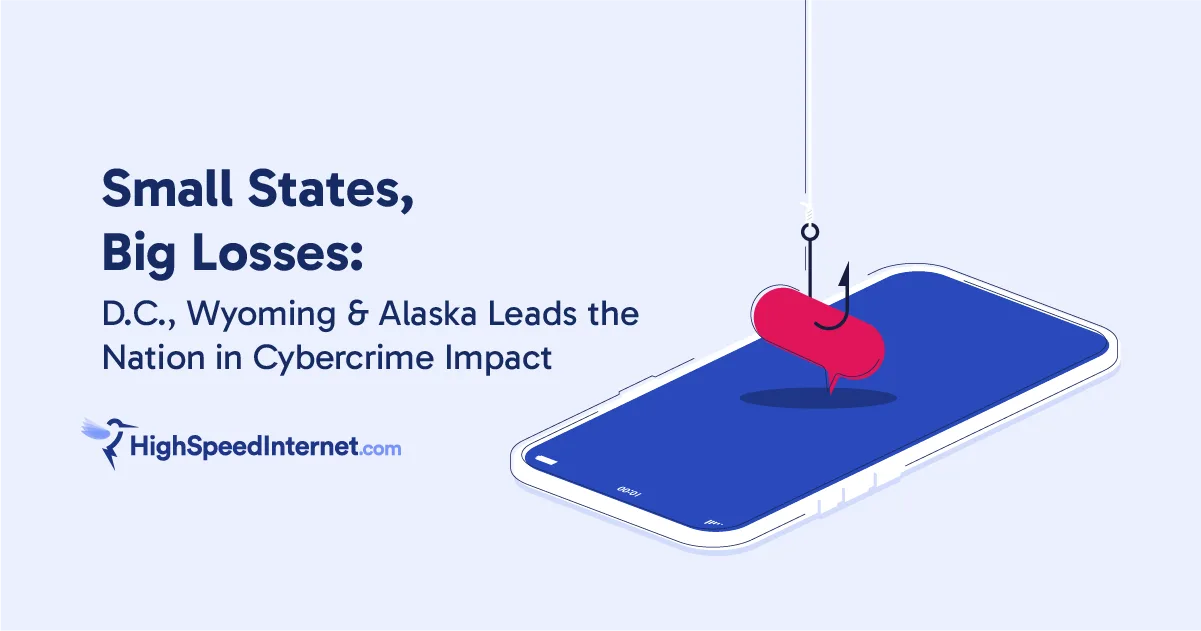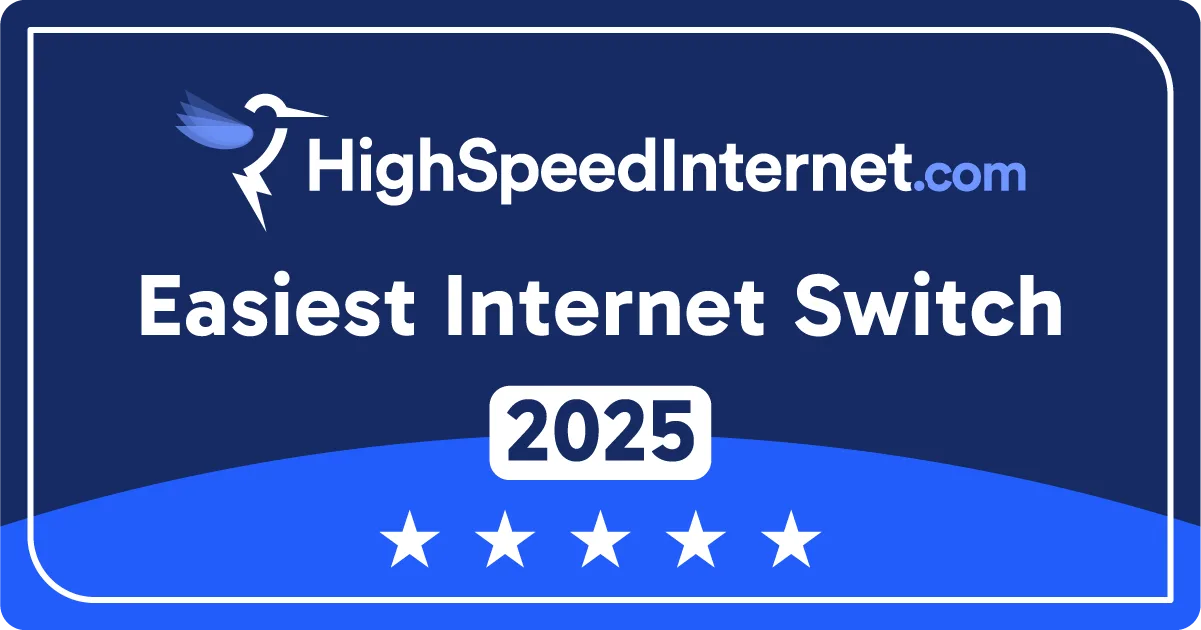The State of the Internet in 2020: Speeds, Prices, and How COVID-19 Threw Connectivity into the Spotlight
Dec 14, 2020 | Share
Industry Exclusive/Entertainment
The COVID-19 pandemic really underscored the importance of a reliable, high-speed internet connection. To be frank, the internet (and its ability to connect us to loved ones, entertainment, information, school, work, medical care, and food delivery services) is one of the few things that has made 2020 bearable. But the US still has inconsistent internet access across the 50 states.
We dove into data we collected throughout 2020 to take a holistic look at the state of the internet this year. The data shows that where you live in America can dramatically affect your access to the internet. We’ll walk through what we’ve found when it comes to internet speeds and prices, customer satisfaction, how ISPs responded to the pandemic, and what we expect moving forward.

Internet speeds
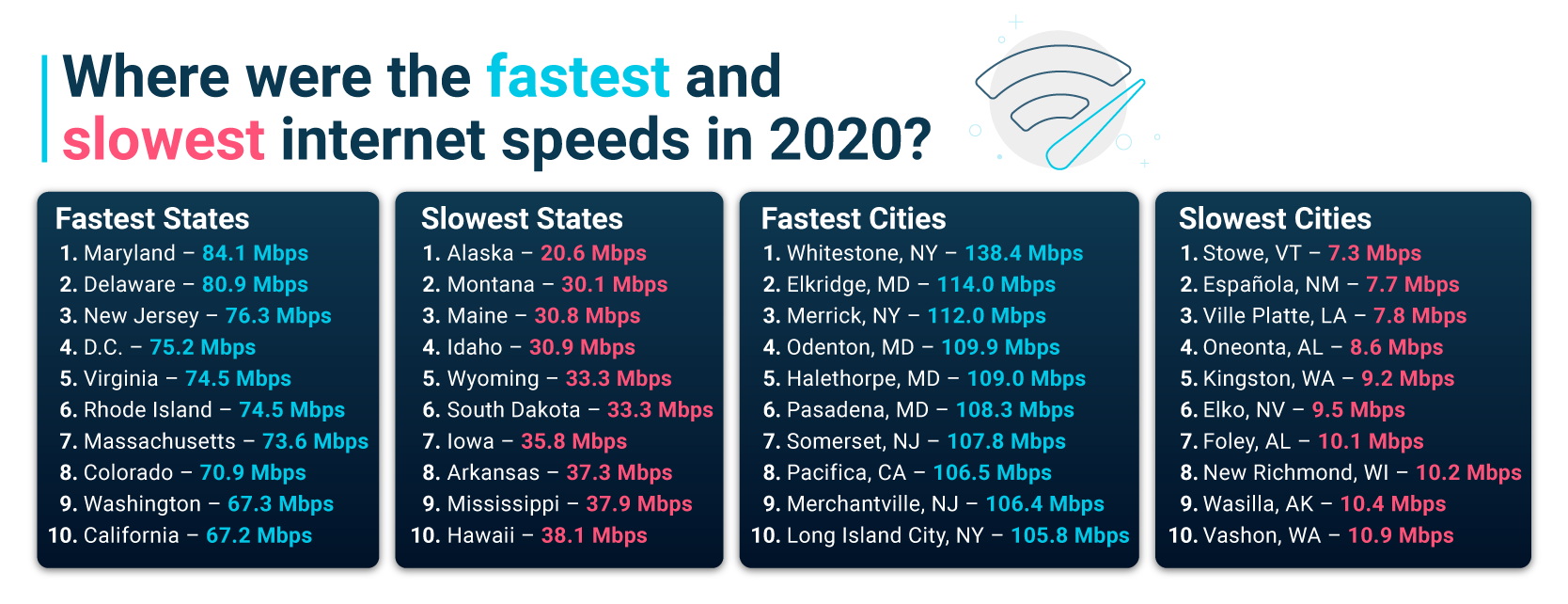
These states and cities have the fastest and slowest internet speeds in 2020
States with the fastest average internet speeds:
Maryland – 84.1 Mbps
Delaware – 80.9 Mbps
New Jersey – 76.3 Mbps
D.C. – 75.2 Mbps
Virginia – 74.5 Mbps
Rhode Island – 74.5 Mbps
Massachusetts – 73.6 Mbps
Colorado – 70.9 Mbps
Washington – 67.3 Mbps
California – 67.2 Mbps
States with the slowest average internet speeds:
Alaska – 20.6 Mbps
Montana – 30.1 Mbps
Maine – 30.8 Mbps
Idaho – 30.9 Mbps
Wyoming – 33.3 Mbps
South Dakota – 33.3 Mbps
Iowa – 35.8 Mbps
Arkansas – 37.3 Mbps
Mississippi – 37.9 Mbps
Hawaii – 38.1 Mbps
The Federal Communications Commission defines broadband internet as 25 Mbps—that’s the minimum requirement, but many households need more than that. There are many parts of the country (especially in cities) that offer internet speeds much higher than 25 Mbps, but there are also swaths of the country (mostly rural areas) that still don’t have access to connections that fit this minimum broadband standard.
We can see this urban/rural divide in our comparisons of the fastest and slowest internet speeds in different states and cities. For context, the average internet speed for the whole country is 42.86 Mbps according to our internet speed test. States with higher population densities tend to have internet speeds faster than that average, while speeds in more rural states and areas are slower.
This is partially because internet infrastructure—especially faster infrastructure like cable and fiber—is expensive, and internet service providers (ISPs) are more likely to invest in communities with a lot of potential customers (usually urban areas). That leaves many areas in the US with outdated internet tech—like digital subscriber line (DSL) that often doesn’t meet the 25 Mbps minimum.
According to 1,000 Americans surveyed in October 2020, 45% of internet users surveyed think their internet connection is too slow. But even though almost half the respondents are dissatisfied with their internet performance, only 16% have upgraded this year.
Availability and price are two key reasons why people who are dissatisfied with their internet speeds aren’t upgrading. We’ve covered availability a bit here; let’s dive into pricing issues.
The Price of Internet

These states pay the most and least for internet in 2020
States that pay the most for internet, per Mbps:
Wyoming – $7.84
North Dakota – $7.57
Montana – $7.28
South Dakota – $7.17
Virginia – $6.74
Iowa – $6.34
New Mexico – $6.23
North Carolina – $5.87
Alabama – $5.82
Nebraska – $5.43
States that pay the least for internet, per Mbps:
Rhode Island – $0.63
D.C. – $0.84
Massachusetts – $1.13
Georgia – $1.65
New York – $1.72
California – $1.86
Maryland – $1.99
Kentucky – $2.00
Connecticut – $2.06
Texas – $2.29
Average price of internet per Mbps in the United States is $3.91.
The internet prices here are listed in amount per Mbps (megabit per second) and are from our report on the states that pay the most and least for internet. Many states with higher average internet costs also have faster speeds. We broke down the data to show prices per Mbps so you can really see the difference in value.
Like internet speeds, internet prices are also better in urban areas where there are more people and therefore more competition between ISPs. It seems counterintuitive because we’d like to think that lower internet speeds come with lower prices and vice versa, but that’s not the case.
Average costs and what people are willing to pay
- The average cost for new internet plans sold in America is $48.25 per month.
- When surveyed, people self-report spending an average of $80 per month on internet bills.
- Most people consider $20–$50 per month for internet to be a reasonable amount.
- 61% of Americans think their internet service is overpriced.
The discrepancies in the average prices of new plans vs. self-reported monthly bills can be attributed to rising costs of internet the longer you stay with the same provider. One would think loyalty to a brand or service would garner you better prices, but no. Most ISPs offer special introductory prices to lure in new customers and hike up prices after the first year or two.
Customer Satisfaction: How satisfied were customers with their internet in 2020?
By now, it’s hard to think about a time before the COVID-19 pandemic. But earlier in 2020, we surveyed more than 2,800 internet users across the US to find out how people really feel about their internet connections. The results of our 2020 Customer Satisfaction Survey show pretty happy customers for some specific ISPs. For example, Earthlink customers seem pretty thrilled about their service.
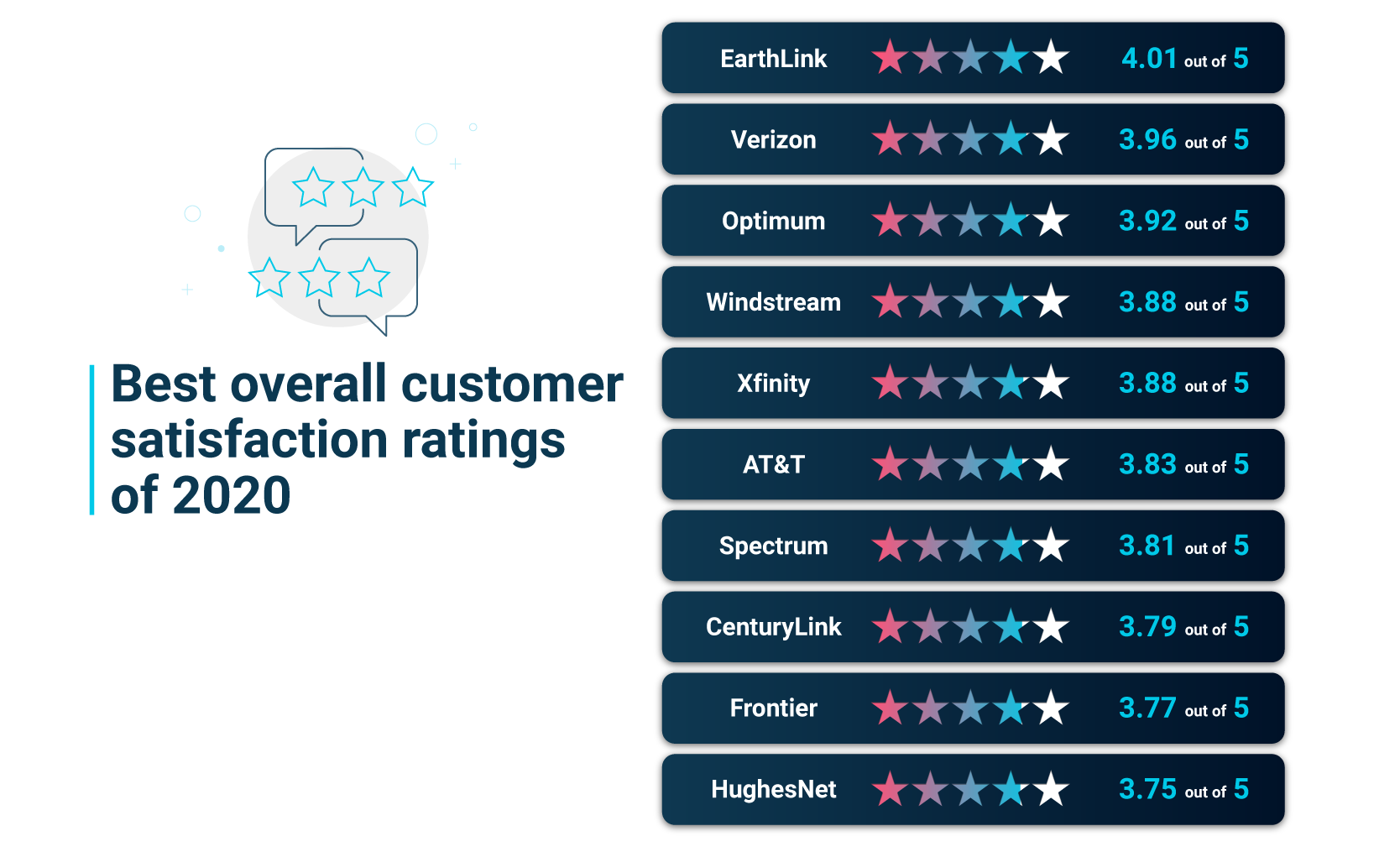
We asked internet users about their satisfaction with eight aspects of their internet service: speed, setup, reliability, billing, tech support, customer service, apps, and equipment. Earthlink topped six of the eight categories. Xfinity got the highest customer satisfaction score for internet speed (very closely followed by Verizon and EarthLink), and Verizon took the top spot for internet reliability.
Beyond Earthlink, Verizon and Optimum were the next two highest-ranked internet providers in 2020, and all three were rated at the top of the chart for reliability as well. Which makes sense because it’s hard to be satisfied with your internet service if it’s constantly going out on you.
How ISPs adjusted during the pandemic
In mid-March of 2020, the FCC announced the Keep Americans Connected initiative to encourage internet providers to, as the name suggests, keep Americans connected to the internet during the COVID-19 pandemic.
Most internet providers across the country signed the FCC’s pledge, and many also offered no-cost internet services to students or others who lost access during the first round of shutdowns. These providers included Xfinity, Spectrum, Optimum, and Suddenlink. And though the free internet offers from these providers have expired, you can still find limited free internet.
Unfortunately, the Keep Americans Connected pledge lasted only through June of 2020, even though the pandemic continues.
Many internet providers did, however, make small improvements to their internet plans or low-income internet offers to better conform to how people are using the internet now.
- Xfinity raised its data caps on most plans from 1 TB to 1.2 TB per month.
- Altice (Suddenlink and Optimum) created a low-cost internet program called Altice Advantage.
- Verizon Fios expanded their Lifeline Discount Program to offer $20 off fiber internet services.
- Xfinity, Cox, and Mediacom increased internet speeds on their low-cost internet programs.
We applaud ISPs that offered free services and opened their hotspots for public use to help people stay connected. But for the most part, ISPs are now offering the same services and the same prices as they were before the pandemic.
Looking to the future of Internet
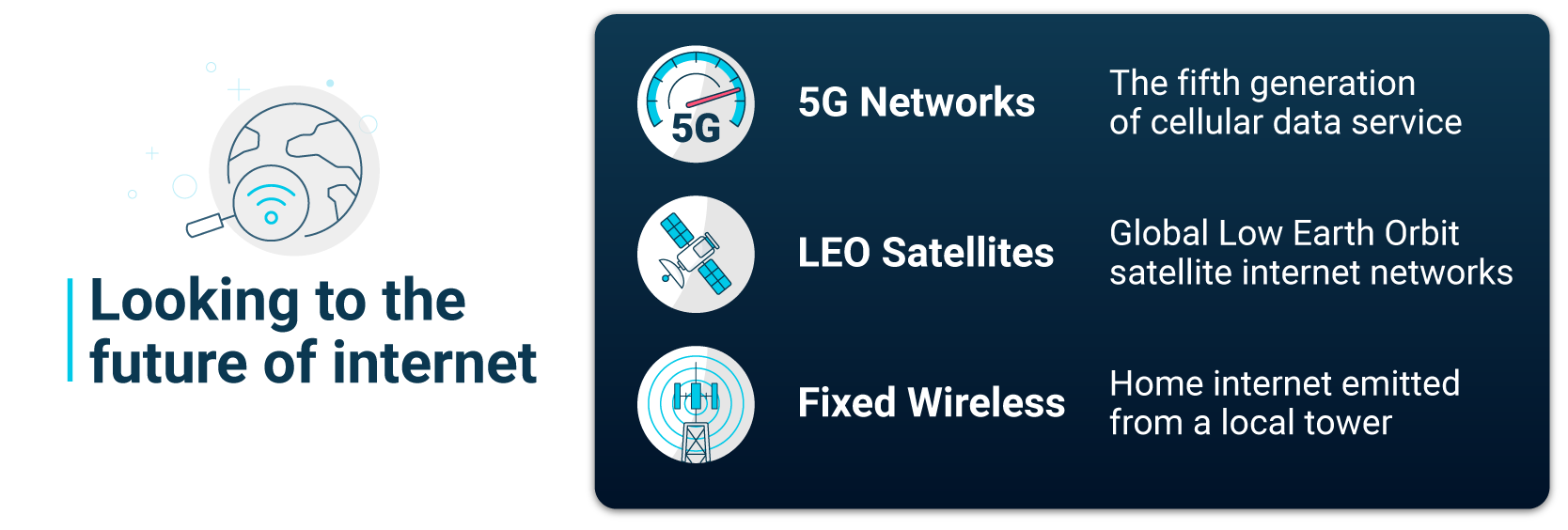
This year has shown us that the internet is without a doubt a necessary resource for modern life. Our data still shows gaps in availability and affordability across the US. Even with ISPs jumping in to adjust to the new normal, the digital divide is still here—but improvements in technology and internet infrastructure can help bridge the gap.
Going Wireless
We’re all familiar with wireless internet—we use it in different forms all the time: cell phone data, Wi-Fi, etc. Still, most home internet connections rely on buried cables to connect you to your provider’s network. Burying cables for new lines can be prohibitively expensive, so many companies are experimenting with ways to deliver home broadband without the cables.
Types of wireless internet technologies
- 5G (Verizon, T-Mobile, AT&T)—The fifth generation of cellular data service
- LEO satellite (Starlink)—Low Earth Orbit satellite internet
- 4G (Verizon, T-Mobile, AT&T)—The fourth generation of cellular data service
- Fixed-wireless (mainly small providers)—A type of home internet including a nearby tower that distributes internet signals and a home transceiver
Some people are apprehensive about advances in wireless internet technology. According to a recent survey about tech myths in America, one out of four people think 5G towers make you sick, and a third of Americans believe that low-Earth orbit satellites will ruin our view of the night sky.
Putting people’s reservations aside, we’re seeing exciting improvements in internet technology. Elon Musk’s Starlink is running its “Better than Nothing Beta” test in parts of Maine, Montana, North Dakota, and Washington. Verizon has started offering both 4G and 5G home internet. And some ISPs are even retiring old DSL infrastructure to make way for better connections.
The United States could see much better connectivity in 2021 and onward—thanks to the wireless tech mentioned here and thanks in part to COVID-19. We’re not saying that the pandemic was a good thing at all. But if we can find something positive in a bad situation, it’s that the pandemic threw internet connectivity and its necessity as a communication resource into the public eye in a way that very little besides nationwide shutdowns could. Moving forward, we hope that internet providers, Americans, and the legislature will continue to view internet as a necessity rather than a luxury and work towards accessible, affordable, and reliable internet for all.
Author - Rebecca Lee Armstrong
Rebecca Lee Armstrong has more than six years of experience writing about tech and the internet, with a specialty in hands-on testing. She started writing tech product and service reviews while finishing her BFA in creative writing at the University of Evansville and has found her niche writing about home networking, routers, and internet access at HighSpeedInternet.com. Her work has also been featured on Top Ten Reviews, MacSources, Windows Central, Android Central, Best Company, TechnoFAQ, and iMore.
Editor - Aaron Gates
